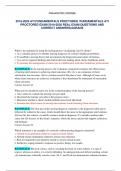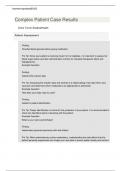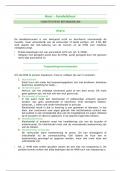Exam (elaborations)
ATI FUNDAMENTALS PROCTORED /FUNDAMENTALS ATI PROCTORED EXAM REAL EXAM QUESTIONS AND CORRECT ANSWERS|AGRADE
- Module
- Institution
What is the rationale for using the nursing process in planning care for clients? A. As a scientific process to identify nursing diagnoses of a clients' healthcare problems. B. To establish a nursing theory that incorporates the biopsychosocial nature of humans. C. As a tool to organize thinking...
[Show more]





